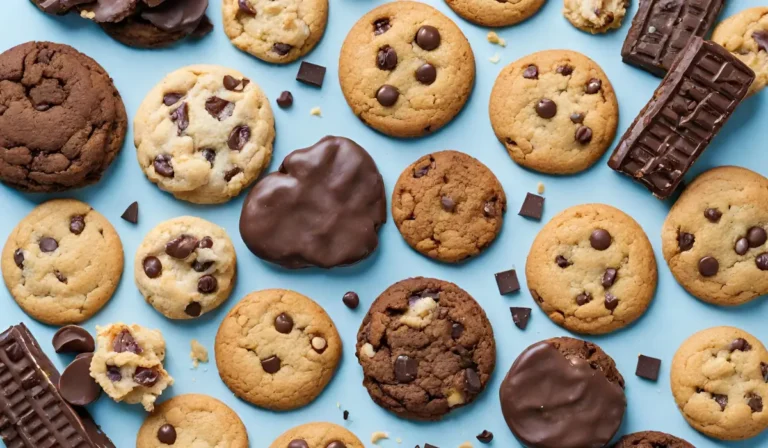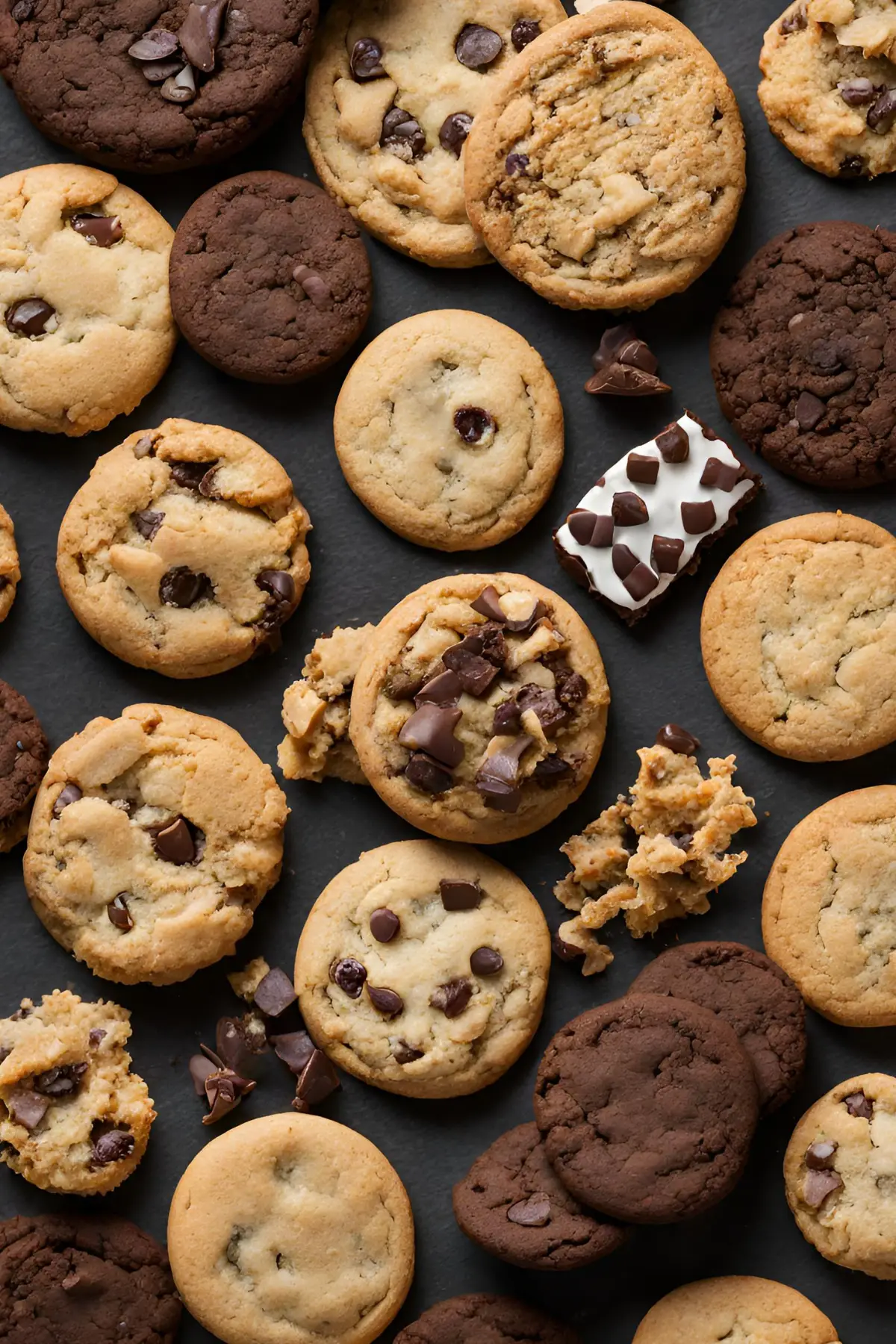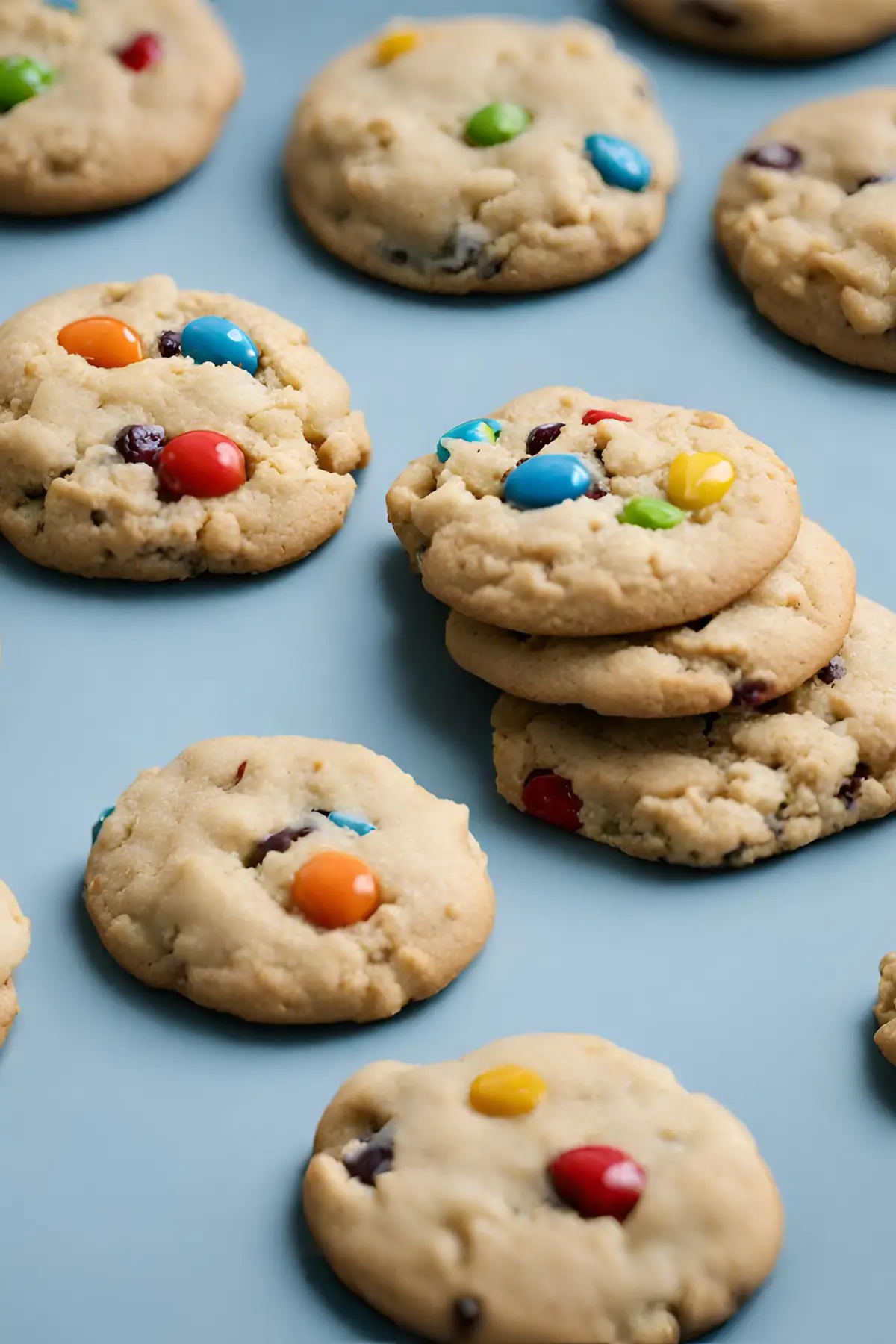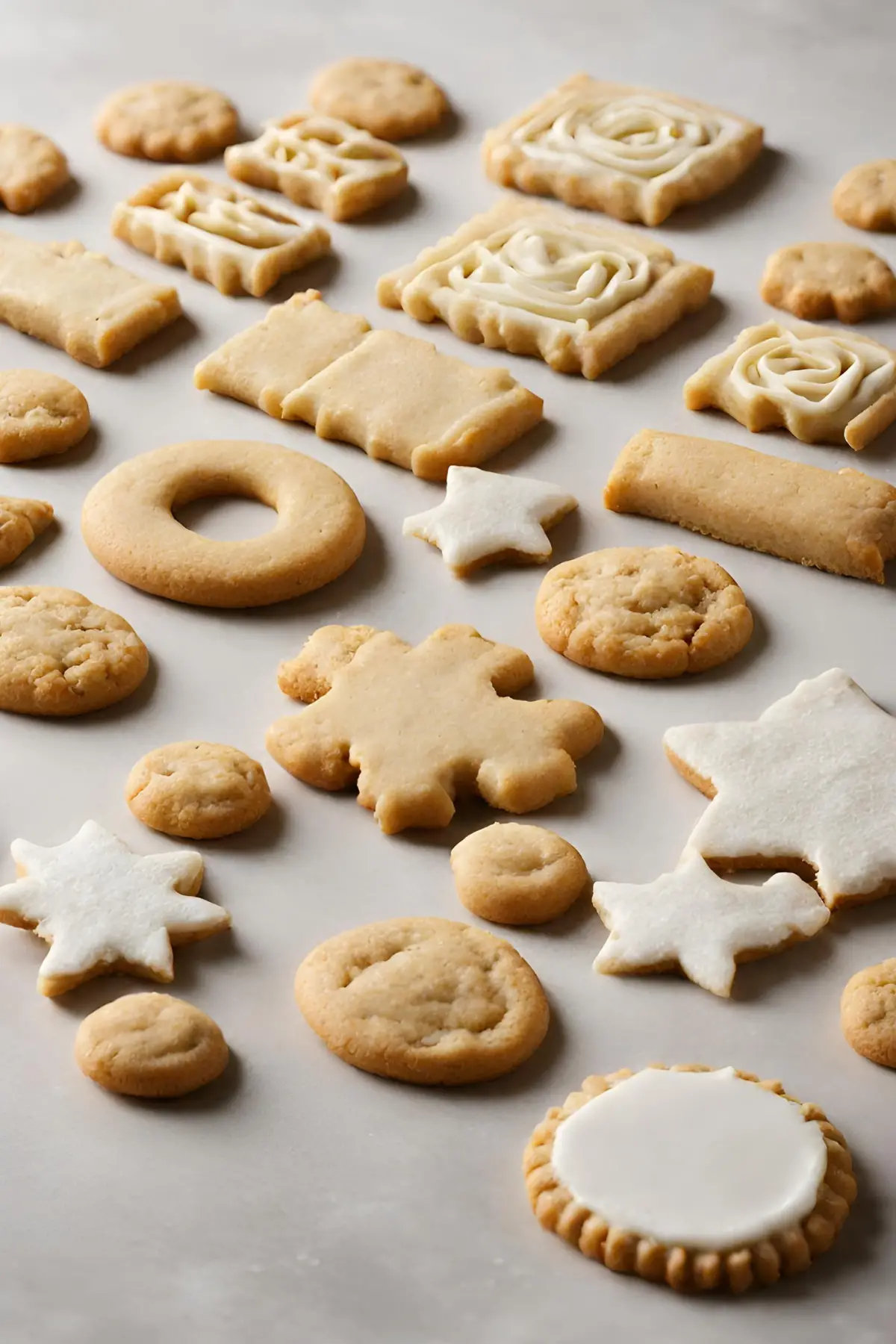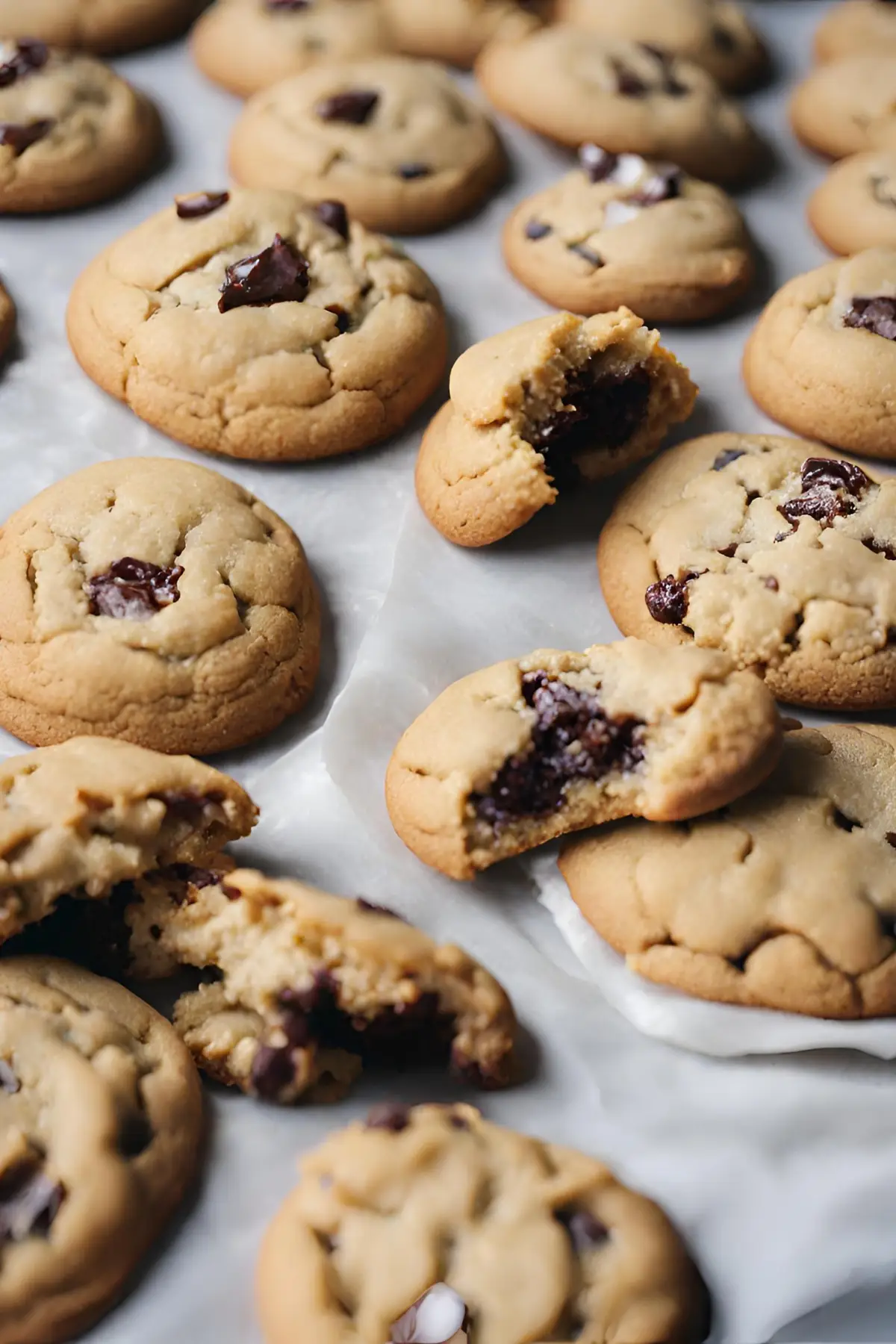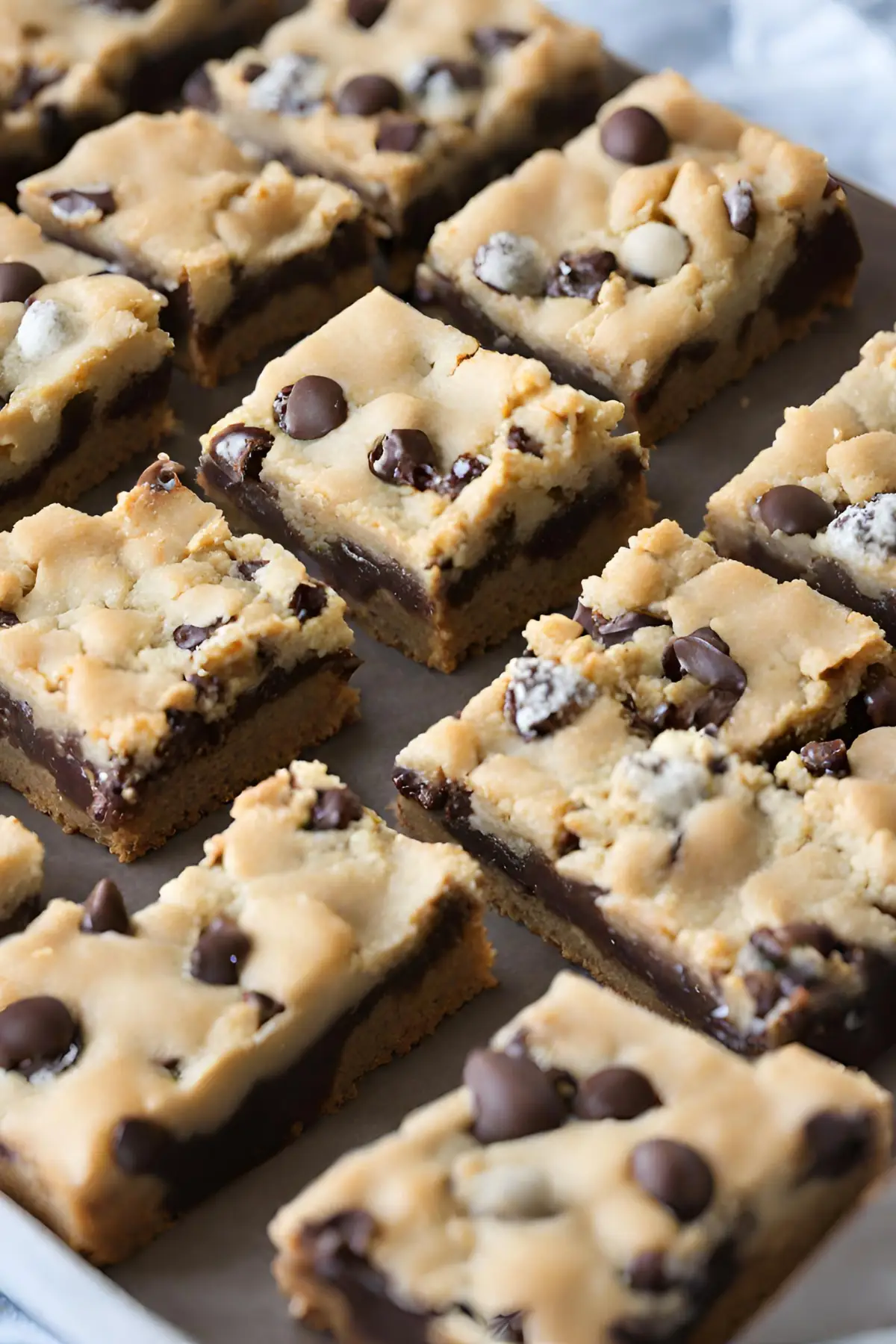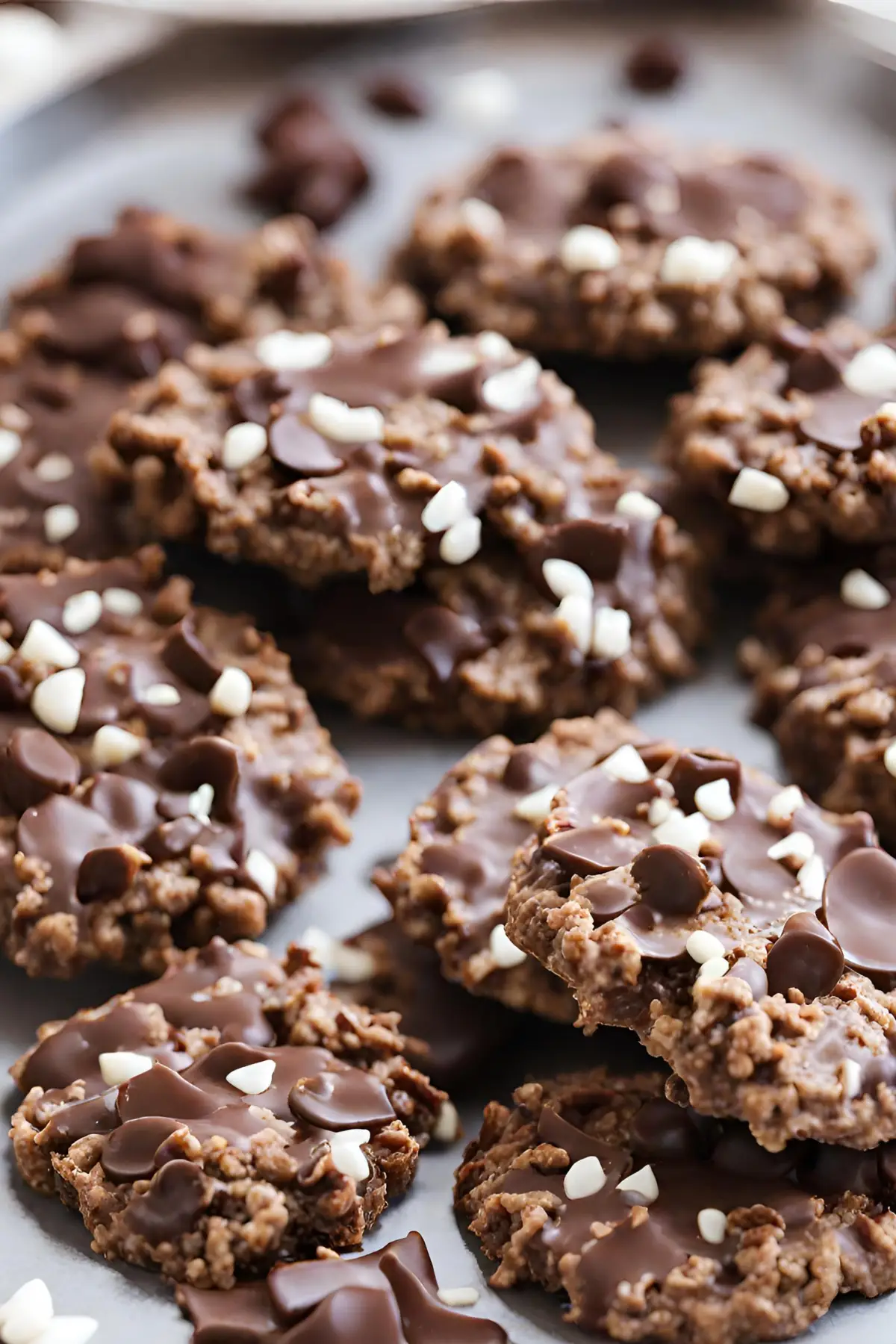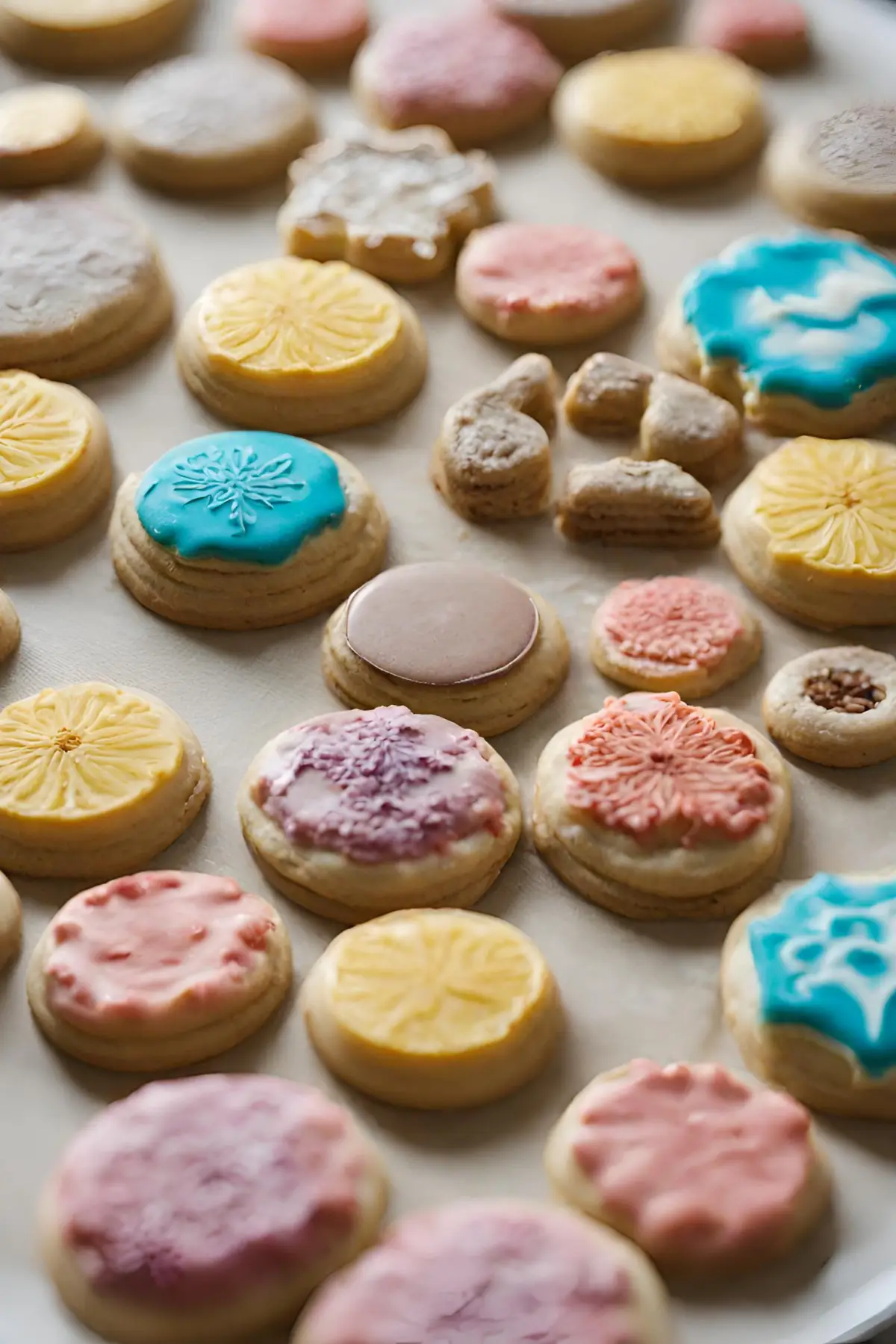What are the 7 Types of Cookies?
Cookies are more than just a sweet treat; they are a staple in culinary traditions and a delight for dessert lovers. From the crunchy texture of a biscotti to the soft, chewy feel of a fresh chocolate chip cookie, the world of cookies is vast and varied.
Introduction to the World of Cookies
Cookies are some of the most delicious desserts out there. Whether they’re crunchy or chewy, cookies are always just the right amount of sweet and delicious. The aroma they make in your kitchen while baking is just an added benefit. Cookies come in a wide range of flavors, shapes, and textures and the world is only made better by them.
The Significance of Cookies in Culinary Culture
Cookies hold a special place in our hearts and kitchens. They are not just a culinary delight but also a cultural icon. Be it a family gathering, a festive celebration, or a quiet evening snack, cookies are always the perfect companion. For more on the cultural significance and diverse recipes of cookies, explore Food Network‘s extensive collection.
Understanding Different Types of Cookies
When it comes to classifying cookies, there are several types to consider. Each type has its unique method of preparation, texture, and taste. Understanding these types can enhance your baking skills and appreciation for this versatile dessert. For expert baking tips and techniques, check out King Arthur Baking Company.
Drop Cookies
Description and Examples:
Drop cookies are a beloved classic in the world of baking, cherished for their simplicity and versatility. The method involves taking spoonfuls of cookie dough and dropping them onto a baking sheet. This straightforward technique is part of their charm, offering a rustic and inviting appearance. Among the myriad of variations, chocolate chip cookies stand as a universal favorite, embodying the essence of comfort food. Oatmeal raisin cookies offer a chewy texture and a slightly healthier profile, appealing to those who enjoy a mix of sweet and wholesome. Peanut butter cookies, rich and flavorful, provide a satisfying depth with every bite. These examples merely scratch the surface of drop cookies’ vast and delicious realm.
Baking Techniques:
The magic of drop cookies unfolds in the oven, where they spread and flatten, a process that contributes significantly to their texture. This transformation is not just visual but also culinary, as the spreading allows for a range of textures from crispy edges to soft, chewy centers. The key to achieving the perfect spread lies in the dough’s consistency and the baking temperature, which can be adjusted according to preference and the specific recipe being used.
Rolled or Cutout Cookies
Characteristics:
Rolled or cutout cookies are the artisans of the cookie world, offering a canvas for creativity and precision. The dough for these cookies is rolled out to an even thickness and then cut into various shapes using cookie cutters. This method allows for an endless variety of designs, from simple circles and stars to intricate holiday-themed shapes. The appeal of rolled cookies lies in their aesthetic versatility, making them a popular choice for personalized treats and gifts.
Preparation Methods:
Beyond their shape, rolled cookies are often adorned with icing, sprinkles, and other decorations, transforming them into edible art. The decorating process is not only a way to add flavor and color but also an opportunity for personal expression and festivity. Whether it’s a delicate glaze, vibrant royal icing, or colorful sprinkles, the decorations enhance both the cookies’ appearance and their appeal.
Occasions:
Rolled or cutout cookies are particularly suited to holidays and custom-themed parties, where their shapes and decorations can align with the event’s theme. From Christmas trees and Halloween ghosts to personalized shapes for birthdays and anniversaries, these cookies add a special touch to any celebration. Their ability to be customized makes them a favorite for creating memorable and themed culinary experiences.
Sandwich Cookies
Explanation: Sandwich cookies are a delightful and versatile category of cookies that consist of two cookies with a filling sandwiched in between. This unique structure allows for a combination of textures and flavors, making them a popular choice among cookie enthusiasts.
Examples:
- Classic Oreos: Perhaps the most iconic example of sandwich cookies, Oreos consist of two dark chocolate-flavored cookies with a sweet, creamy filling.
- Macarons: Not to be confused with macaroons, macarons are a sophisticated French confection made from almond flour, sugar, and egg whites, filled with ganache, buttercream, or jam.
- Whoopie Pies: Originating from the United States, whoopie pies feature two soft, cake-like cookies with a marshmallow fluff or cream filling.
Filled Cookies
Unique Aspects: Filled cookies are distinguished by their hidden surprises. The filling, encased within the cookie dough, is revealed only upon biting into the cookie, offering a burst of flavor that complements the cookie’s texture.
Popular Fillings:
- Fruit Preserves: A classic filling, fruit preserves like raspberry, apricot, or strawberry add a sweet and slightly tart flavor to cookies.
- Chocolate: Whether it’s a molten chocolate center or a solid piece of chocolate, this filling is a favorite for its rich, indulgent taste.
- Cream: Cream fillings, which can range from vanilla to flavored buttercreams, offer a smooth contrast to the cookie’s texture, making for a luxurious eating experience.
Cookie Bars
Overview: Cookie bars represent a convenient and versatile category within the world of baked treats. Unlike traditional cookies that are individually portioned and baked, cookie bars are prepared by spreading the dough evenly in a pan before baking. Once baked, they are cut into squares or bars, making them easy to serve and enjoy.
Convenience: The simplicity of preparing cookie bars makes them a favorite for bakers of all levels. They require less time and effort compared to individual cookies since the dough does not need to be portioned out. This convenience, coupled with their delicious taste, makes cookie bars perfect for large gatherings, potlucks, and family events.
Molded Cookies
Molding Process: Molded cookies are shaped either by hand or with the use of molds before baking. This process allows for a wide range of shapes, sizes, and designs, making molded cookies particularly appealing for special occasions and holidays.
Examples:
- Traditional Shortbread: A classic example of molded cookies, traditional shortbread is often pressed into decorative molds before baking to create beautiful patterns on the cookie’s surface.
- Gingerbread Figures: Especially popular during the holiday season, gingerbread dough is rolled out and cut into figures using cookie cutters or hand-shaped to create detailed and festive designs.
No-Bake Cookies
Characteristics: No-bake cookies are a unique category in the cookie world, as they are made without the use of an oven. These cookies often rely on the cooling and setting process to achieve their final texture, making them an excellent option for those who either lack oven access or prefer a quicker, cooler method of cookie-making. The ingredients are typically mixed, cooked on a stovetop if necessary, and then chilled to set.
Popular Recipes:
- Chocolate Oatmeal Cookies: These no-bake cookies combine cocoa powder, oats, sugar, and butter, often with the addition of peanut butter or nuts, to create a chewy, satisfying treat.
- Peanut Butter Bars: A layer of creamy peanut butter mixture is topped with melted chocolate and then chilled until set, resulting in a bar that’s both easy to make and delicious.
Pressed Cookies
Preparation: The preparation of pressed cookies involves placing cookie dough into a cookie press, a device equipped with various disks to create different shapes and designs. The dough is then pressed directly onto a baking sheet, allowing for uniform and intricate cookies with minimal effort.
Occasions: Pressed cookies are particularly suited for occasions where detail and presentation matter. Their decorative designs make them a hit at holiday gatherings, tea parties, and special events. The ability to use different disks means a single dough recipe can produce a variety of shapes, making these cookies as versatile as they are delightful.
Frequently Asked Questions
- What are the healthiest types of cookies? Options include oatmeal, almond, and fruitcake cookies.
- What are the most popular types of cookies? Chocolate chip and peanut butter cookies top the list.
- Can cookies be made in a vegan or gluten-free manner? Yes, there are many recipes for vegan and gluten-free cookies.
Types of Cookies: Exploring the 7 Popular Varieties
1. Drop Cookies
- Description: Easy to make, involving dropping spoonfuls of dough onto a baking sheet.
- Ingredients: Flour, sugar, eggs, butter, baking soda, salt, vanilla extract; variations include chocolate chips, oatmeal, raisins.
- Instructions: Mix wet and dry ingredients separately, combine, drop by spoonfuls on a baking sheet, and bake.
- Notes: The dough’s consistency can vary; add mix-ins like nuts or chocolate chips for variety.
- Details:
- Prep Time: 15 mins
- Cook Time: 10-12 mins
- Total Time: 25-27 mins
- Yield: 2 dozen
- Category: Dessert
- Method: Baking
- Cuisine: American
- Diet: Vegetarian
2. Rolled or Cutout Cookies
- Description: Dough is rolled and cut into shapes, often decorated.
- Ingredients: Flour, sugar, eggs, butter, baking powder, salt, vanilla extract; icing or sprinkles for decoration.
- Instructions: Roll out dough, cut into shapes, bake, and decorate.
- Notes: Keep the dough chilled for easier handling.
- Details:
- Prep Time: 30 mins
- Cook Time: 8-10 mins
- Total Time: 1 hr (including decoration)
- Yield: Depends on cutter size
- Category: Dessert
- Method: Baking
- Cuisine: Varied
- Diet: Vegetarian
3. Sandwich Cookies
- Description: Consist of two cookies with a filling in between.
- Ingredients: Depends on cookie type; common fillings include cream, chocolate, or jam.
- Instructions: Prepare cookies, cool, then add filling to sandwich them together.
- Notes: Ensure cookies are completely cooled before filling to prevent melting.
- Details:
- Prep Time: 20 mins
- Cook Time: 10-12 mins
- Total Time: 1 hr (with cooling and assembly)
- Yield: 1 dozen sandwiches
- Category: Dessert
- Method: Baking
- Cuisine: American/French (for macarons)
- Diet: Vegetarian
4. Filled Cookies
- Description: Cookies with a hidden surprise filling inside.
- Ingredients: Varies; common fillings include fruit preserves, chocolate, or cream.
- Instructions: Encase filling in dough, seal, bake, and optionally dust with powdered sugar.
- Notes: Ensure the edges are well sealed to prevent the filling from leaking.
- Details:
- Prep Time: 30 mins
- Cook Time: 15 mins
- Total Time: 45 mins
- Yield: 2 dozen
- Category: Dessert
- Method: Baking
- Cuisine: Varied
- Diet: Vegetarian
5. Cookie Bars
- Description: Baked in a pan and cut into squares or bars.
- Ingredients: Similar to drop cookies but may include layers or toppings.
- Instructions: Prepare dough, spread in a pan, bake, cool, and cut into bars.
- Notes: Layer with toppings like nuts, chocolate chips, or a crumble for texture.
- Details:
- Prep Time: 15 mins
- Cook Time: 25-30 mins
- Total Time: 40-45 mins
- Yield: 24 bars
- Category: Dessert
- Method: Baking
- Cuisine: American
- Diet: Vegetarian
6. Molded Cookies
- Description: Shaped by hand or using molds before baking.
- Ingredients: Varies; common examples include shortbread and gingerbread.
- Instructions: Shape dough using molds or hands, bake, and optionally decorate.
- Notes: Dough should be firm for easier molding.
- Details:
- Prep Time: 20 mins
- Cook Time: 10-15 mins
- Total Time: 30-35 mins
- Yield: Varies
- Category: Dessert
- Method: Baking
- Cuisine: Varied
- Diet: Vegetarian
7. No-Bake Cookies
- Description: Made without an oven, often chilled to set.
- Ingredients: Oats, sugar, butter, milk, cocoa powder, peanut butter.
- Instructions: Mix ingredients, drop onto wax paper, chill until set.
- Notes: Quick and easy, perfect for warm weather or when oven use is not desired.
- Details:
- Prep Time: 10 mins
- Cook Time: 0 mins (chill time varies)
- Total Time: 1 hr (including chilling)
- Yield: 2 dozen
- Category: Dessert
- Method: Chilling
- Cuisine: American
- Diet: Vegetarian
Nutritional Facts
Given the diverse nature of these cookie types, nutritional facts will vary significantly based on ingredients and serving sizes. Generally, cookies can range from 50 to 200 calories per serving, with variations in fat, sugar, and carbohydrate content depending on the recipe specifics. For accurate nutritional information, it’s best to calculate based on the specific ingredients and quantities used in your chosen recipe.

